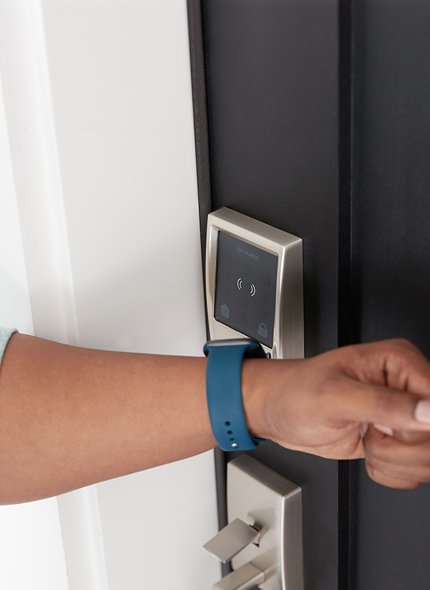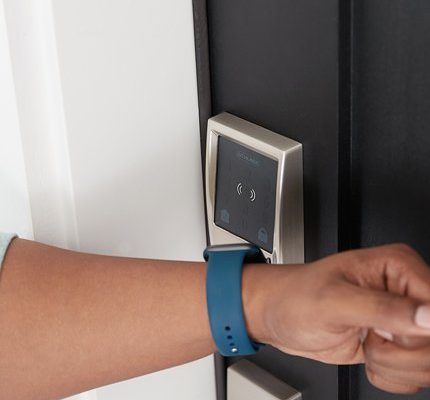
Most modern smart locks, like the August Wi-Fi Smart Lock, Schlage Encode, or Yale Assure SL, use sensors to detect movement, tampering, or forced entry. But these sensors aren’t perfect—and if something’s off in the settings, wiring, or batteries, you might get alarms triggered by nothing more than a breeze, a vibration, or a battery hiccup. You might be wondering: is this a code issue, a hardware glitch, or just a simple sync problem? Let’s walk through the steps to figure out what’s going on, so you can get your peace (and your sanity) back.
Spotting the Signs: What Counts as a False Alarm?
Before you dive into troubleshooting, you need to know exactly what you’re dealing with. A false alarm on a smart lock usually means the device is alerting you—through your phone app, an audible siren, or a blinking light—when there’s no real reason. For example, you might get a push notification that your Schlage Encode lock was tampered with, but nobody’s even at the door. Or your Yale Assure SL starts beeping in the middle of the night, but there’s zero evidence of a break-in.
Here’s the thing: not all notifications are created equal. Some alerts might be legit—like if the battery is low or the unit lost connection to Wi-Fi. But if the alarm is set to trigger for “security breaches” and you keep getting those at random times, that’s textbook false alarm territory.
It’s important to keep track of *when* and *how* these false alarms happen. Is it always at a certain time or weather condition? Does it happen after someone slams the door nearby, or only when you arm the lock remotely? These patterns matter, because they’ll help you narrow down the cause as you go through the troubleshooting steps.
Check the Basics: Power, Battery, and Installation
Honestly, you’d be surprised how many smart lock false alarms can be traced back to something simple like a dying battery or a loose installation. If you’re using a model like the August Wi-Fi Smart Lock or a similar battery-powered device, a low battery can lead to all kinds of weird behavior: random alarms, failing to lock/unlock, or losing sync with your app.
- Start by checking the battery level in your lock’s companion app. Most locks have a way to show this. If it’s low, swap in fresh batteries—even if the app says you’ve got 20% left, because thresholds aren’t always reliable.
- Look at how the lock is mounted. If the unit is even slightly misaligned with the door frame, the sensors might think the door is being forced open.
- Gently wiggle the lock. If it moves or seems loose, grab a screwdriver and tighten everything up. Sensor-based alarms often need a rock-solid install to do their job right.
Don’t skip these basics—they’re quick wins, and half the time, this is where the real problem is hiding.
Sensors Gone Wild: Understanding and Testing Your Lock’s Alerts
Most smart locks use built-in accelerometers or contact sensors to detect things like “door forced open” or “tampering.” But those sensors can get confused if there’s too much vibration, an unexpected magnetic field, or a firmware bug.
Let me explain: an accelerometer is a tiny chip that senses movement. If your door gets slammed—or if a heavy truck rumbles by outside—it might trigger a false positive. Contact sensors, on the other hand, detect when the lock and door frame are perfectly aligned. If they’re not, the sensor thinks someone’s messing with the lock.
- Test this by gently shaking the door or tapping near the lock. Does the alarm go off? If it does, your sensors might be too sensitive.
- Some brands, like Yale and August, let you adjust sensitivity settings in their mobile app. Look under Device Settings or Alarm Preferences.
- If there’s no way to adjust the sensitivity, try adding some soft padding (like a thin felt pad) under the lock’s mounting plate. It can help dampen vibrations the sensor might mistake for tampering.
If these tests make the alarm go crazy, you’ve found your culprit. The fix could be as simple as tweaking a setting—or as tricky as recalibrating the lock from scratch.
App Sync Issues: False Alarms Due to Lost Connection
Here’s something a lot of people don’t realize: if your smart lock loses sync with its app or Wi-Fi network, it can misfire alarms just like a confused dog barking at shadows. A brief power outage, Wi-Fi dropout, or even a software update gone sideways can make the lock think something’s wrong when it’s really just out of touch.
- Open your lock’s app—like August, Yale Access, or Schlage Home—and check the lock’s current status. If it shows as “Offline” or keeps switching between online and offline, you’ve got a sync problem.
- Try resetting your router and, if possible, the lock itself. Most locks have a reset or pair button inside the battery compartment or on the back.
- Re-pair the lock with your home Wi-Fi. This usually clears out sync issues that lead to false alarms.
If your home Wi-Fi is spotty, consider moving your router closer to the door or installing a Wi-Fi extender. A stable connection is key for reliable smart lock function—and for stopping those maddening false alarms.
Firmware, Codes, and App Updates: The Hidden Gremlins
Just like your phone or laptop, smart locks depend on software—firmware inside the lock and the app on your phone. Outdated firmware or buggy code can throw everything out of whack, causing false alarms, missed notifications, and strange behavior.
You might be thinking, “Do I really have to mess with firmware?” But honestly, it’s easier than it sounds. Most major brands, like August, Schlage, and Yale, push updates through their apps. If you haven’t updated in a while, you’re basically running security on “hard mode.”
- Check for updates in your lock’s app. There should be an option like Device Info, Firmware Update, or General Settings.
- If there’s an update available, tap it and let the lock do its thing. Keep your phone nearby and don’t interrupt the process.
- It’s also smart to update the app itself. Go to your device’s app store and see if there’s a newer version waiting.
After updating, keep an eye on your lock for the next few days. Sometimes, a single line of buggy code is the only thing standing between peace and a midnight alarm.
Environmental Factors: When “Smart” Meets the Real World
You might not expect it, but the world outside your door can play tricks on your smart lock’s sensors. Changes in temperature, humidity, or even a strong magnet nearby can mess with how some locks interpret their surroundings.
For example, if your lock is installed on a metal door in a humid climate (think Florida in the summer), the door might expand and contract enough to throw off the contact sensors. Or maybe someone in your building decides to drill or hammer nearby, sending vibrations through the frame and spooking your lock.
- Take a look around the door and frame. Notice any new sources of vibration or interference? Try to minimize them or cushion the lock if you can.
- If you’re in an especially hot or cold region, you might have to tweak lock sensitivity during seasonal changes. Check your app for any environment-specific settings.
- Keep magnets, key holders, or metal objects away from the lock’s sensors. Even a strong fridge magnet in the wrong spot can cause trouble.
If the pattern of false alarms changes with the weather or time of day, you’ve probably found your answer.
Comparing Universal vs Brand-Specific Smart Locks
Not all smart locks are created equal. Universal smart locks—ones that work with any smart home system or phone—often have more compatibility quirks or need extra steps to sync or pair. On the other hand, brand-specific locks like the Schlage Encode or Yale Assure SL are built to play nicely with their own apps and hubs, which usually means fewer random alarms.
- Universal locks: Offer more flexibility, but you might run into extra sync or code hiccups. You’ll spend more time updating firmware or resetting connections after a smart home update.
- Brand-specific locks: Are more stable overall, but if you try to add third-party integrations (like Alexa, Google Home, or Apple HomeKit), you can sometimes overload the system and generate phantom alerts.
If you’re constantly fighting with false alarms, think about whether your setup is too complicated. Sometimes, sticking with one brand for both lock and app leads to a much smoother—and quieter—experience.
When to Throw in the Towel: Repair, Replace, or Seek Support?
Let’s say you’ve checked the batteries, tightened the screws, updated the firmware, and even had a long talk with your lock—and you’re still getting false alarms. At this point, it might be time to call in the cavalry.
- Check your warranty. Most major brands offer at least a one-year warranty, and their customer support is equipped to handle persistent issues like this.
- Gather as much info as possible: when the alarms happen, what you’ve tried, and any patterns you’ve noticed. This will help support diagnose the issue quicker.
- In rare cases, your lock’s sensors or circuit board might be faulty. If it’s out of warranty, a basic replacement or repair might actually be faster (and cheaper) than endless troubleshooting.
It’s not giving up—it’s just being smart about your time. Smart locks are meant to make life easier, not add another layer of stress to your daily routine.
If your smart lock is more of a headache than a helper, it’s always okay to reach out for support or consider switching brands. The goal is peace of mind, not constant noise.
When you get stuck, don’t hesitate to lean on official support or the online communities dedicated to your lock’s brand. There’s no shame in wanting a lock that just… works.
Finding Your Smart Lock’s Sweet Spot
Diagnosing a smart lock that’s giving false alarms means balancing a lot of small details—power, installation, code, sync, the weather, and even the type of lock you’re using. The process might not be glamorous, but getting it right means you’ll finally trust your door again. Whether it was a low battery, a loose screw, a cranky sensor, or just a quirk in the app, now you know how to track down the cause and fix it. Keep your setup simple, your firmware current, and don’t ignore the basics. After all, a smart lock is there to give you security—not a jump scare at midnight.
